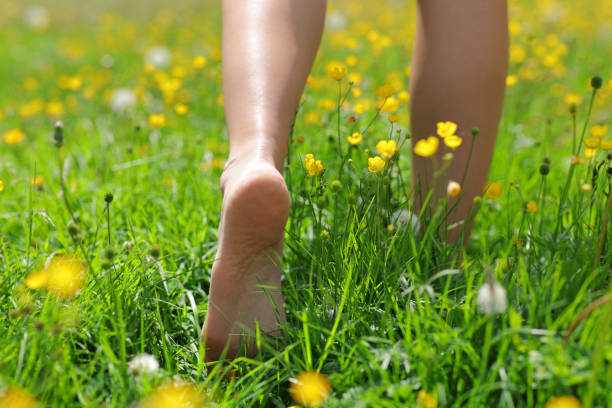What is Grounding?
With industrialization and urbanization, we are becoming increasingly disconnected from nature. Life in big cities—characterized by high-rise buildings, enclosed shopping malls, heavy use of electronic devices, and synthetic clothing—exposes our bodies to constant electromagnetic fields (EMF) (Pall, 2018).
Grounding (also called Earthing) is the practice of making direct physical contact with the Earth’s surface, allowing free electrons from the ground to flow into the body. This contact helps neutralize the body’s positively charged ions (protons) with the Earth’s negatively charged ions (electrons). Research suggests that this process can support both physical and psychological healing (Chevalier et al., 2012).
How to Practice Grounding
The simplest way to ground is to walk barefoot on soil, grass, sand, or natural stone, or to touch the earth with your hands. Studies have shown that barefoot nature walks can lower stress levels, improve sleep quality, and enhance mood (Ghaly & Teplitz, 2004).
Even in urban environments, you can:
- Take barefoot walks in parks or forests.
- Stroll along the beach on sand.
- Engage in gardening or outdoor activities.
Signs You May Need Grounding
You may benefit from grounding if you:
- Spend long hours using computers and mobile phones.
- Experience a static shock when touching others.
- Frequently wear synthetic clothing or rubber-soled shoes.
- Spend much of your time in shopping malls or high-rise buildings.
Potential Benefits
Scientific studies suggest grounding may:
- Reduce stress and help balance the nervous system (Chevalier et al., 2012).
- Improve sleep quality (Ghaly & Teplitz, 2004).
- Lower inflammation (Chevalier et al., 2012).
- Help regulate cortisol levels in the body.
Conclusion
Grounding is a simple, free, and natural way to help counteract the effects of modern-day electromagnetic exposure and to improve overall health. Regular contact with nature can provide long-term benefits for both the body and the mind.
⸻
References
- Chevalier, G., Sinatra, S. T., Oschman, J. L., Sokal, K., & Sokal, P. (2012). Earthing: Health implications of reconnecting the human body to the Earth’s surface electrons. Journal of Environmental and Public Health, 2012, 291541.
- Ghaly, M., & Teplitz, D. (2004). The biological effects of grounding the human body during sleep as measured by cortisol levels and subjective reporting of sleep, pain, and stress. Journal of Alternative and Complementary Medicine, 10(5), 767–776.
- Pall, M. L. (2018). Wi-Fi is an important threat to human health. Environmental Research, 164, 405–416.



